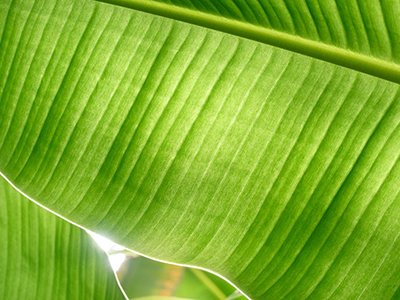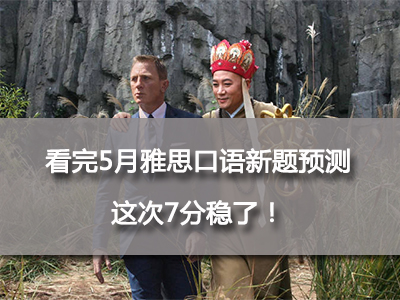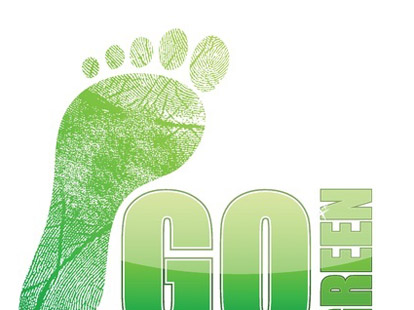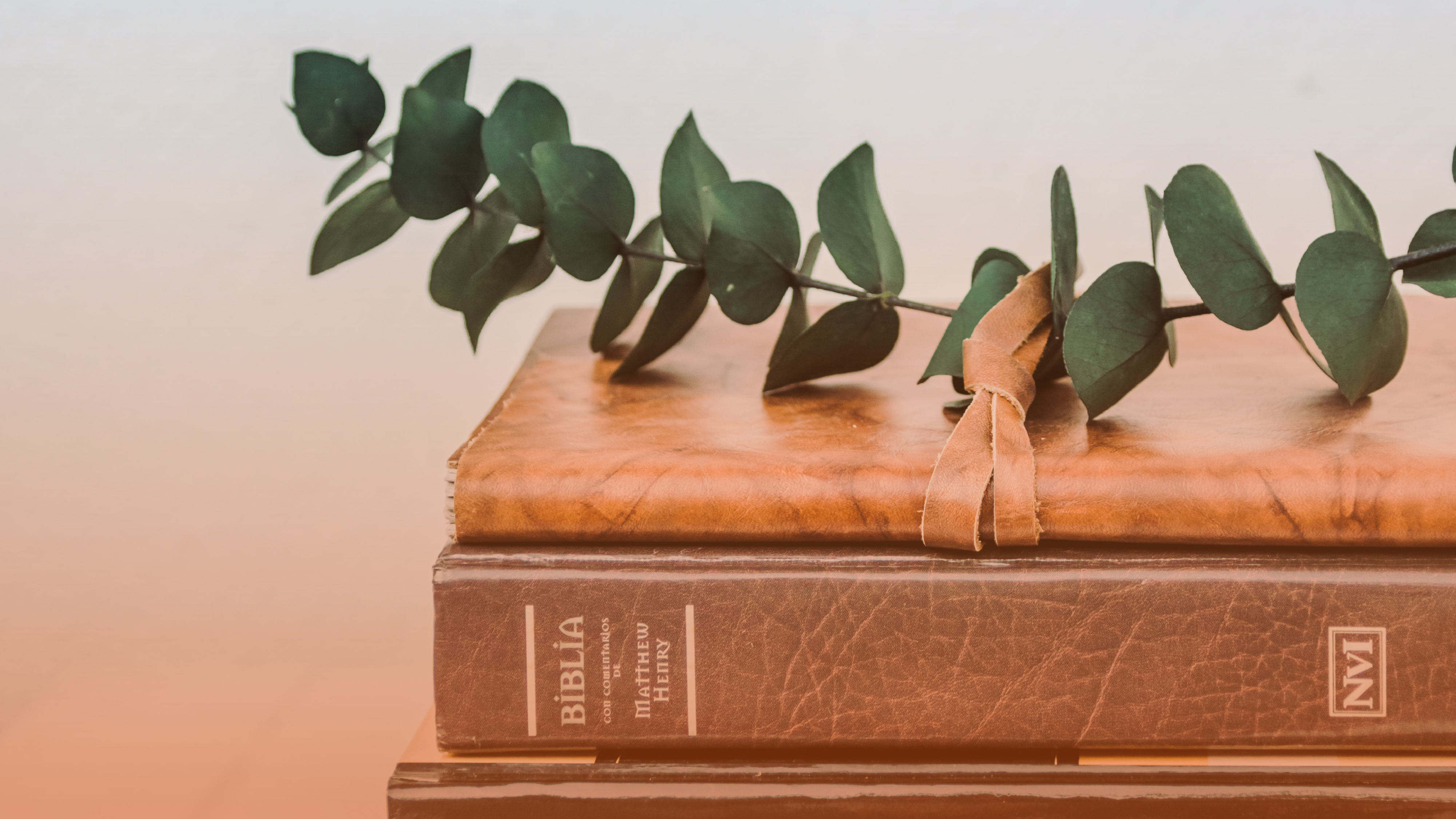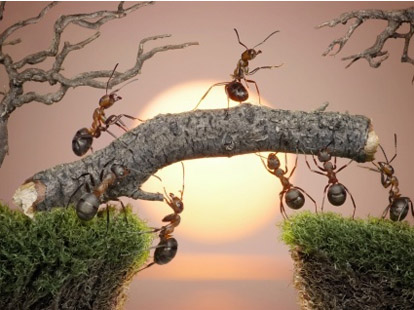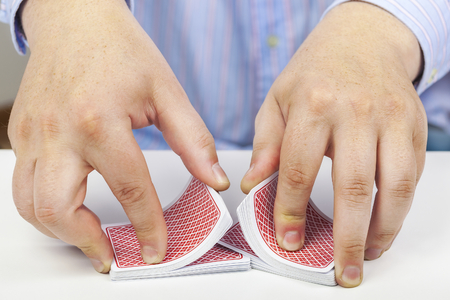【小站独家】雅思阅读全真模考题:塑料的历史
- 2016年07月26日12:04 来源:小站教育作者:小站雅思编辑
- 参与(0) 阅读(16299)
小站独家,最新雅思阅读全真模拟试题。一切患有雅思阅读刷题强迫症的烤鸭,请看这里。小站精心整理了一批雅思阅读模拟试题。如果你的剑桥雅思阅读已是烂熟于心,那么这一系列的模拟题真的很适合你,搭配上绝对原创的讲解,还有全文的中文翻译,这等阅读大餐,还等什么!
The History of the Invention of Plastics
You should spend about 20 minutes on Question 14-27 which are based on Reading Passage below.
|
A |
Natural polymers include such familiar substances as silk, rubber, and cotton. Plastics are artificial polymers. Plastics are used on a daily basis throughout the world. The word plastic is a common term that is used for many materials of a synthetic or semi-synthetic nature. The term was derived from the Greek plastikos, which means "fit for molding." Plastics are a wide variety of combinations of properties when viewed as a whole. They are used for shellac, cellulose, rubber, and asphalt. We also synthetically manufacture items such as clothing, packaging, automobiles, electronics, aircrafts, medical supplies, and recreational items. The list could go on and on and it is obvious that much of what we have today would not be possible without plastics. |
|
|
B |
In the early part of the twentieth century, a big boom occurred in polymer chemistry when polymer materials such as nylon and Kevlar came on the scene. Much of the work done with polymers focuses improvement while using existing technologies, but chemists do have opportunities ahead. There is a need for the development of new applications for polymers, always looking for less expensive materials that can replace what is used now. Chemists have to be more aware of what the market yearns for, such as products with a green emphasis, polymers that break down or are environmentally friendly. Concerns such as these have brought new activity to the science arena and there are always new discoveries to be made. |
|
|
C |
The evolution of the chemistry behind plastics is mind numbing, and the uses for plastics are endless. In the Middle Ages, when scientists first started to experiment, plastics were derived from organic natural sources, such as egg and blood proteins. It wasn't until the 19th and 20th centuries that the plastics we know today were created. Many Americans will recognize the name Goodyear, it was Charles Goodyear who began the modern-day plastic revolution when he vulcanized rubber in 1839, paving the way for the tire. Prior to his discovery, products made with rubber did not hold up well in warm temperatures or climates. Rubber is only one source of plastic, however, and three key inventors followed Good year's path and took plastic from a nearly unusable hard substance to the invaluable man-made resource it is today. |
|
|
D |
The son of a brass lock manufacturer, Alexander Parkes was born in Birmingham, England in 1813. Parkes was raised around metal fabrication. In his first job he worked as an apprentice at Birmingham's brass foundry, owned by Samuel S. Messengers and Sons. Parkes switched his attention from brass work to electroplating when he went to work for George and Henry Elkington. |
|
|
|
It was there Parkes developed his inventive spirit. Parkes’ first patent, awarded in 1841, dealt with electroplating delicate items such as flowers, but throughout his career Parkes reportedly held more than 80 patents on his works with both metals and plastics. Parkes is credited with inventing the first man-made plastic, which he patented as Parkesine in 1856. Parkes introduced this combination of nitrocellulose and solvents to England in 1862 at the |
|
|
|
London International Exhibition. While Parkesine itself did not prove to be a successful material in its original formulation, it was too flammable, it laid the groundwork for successful derivative materials from future inventors. One of those inventors being John Wesley Hyatt. |
|
|
E |
What Alexander Parkes started, John Wesley Hyatt took to the next level. Hyatt was born in Starkey, New York in 1837, and patented several hundred inventions. Hyatt's link to plastics comes in the form of the game of billiards Billiard balls were originally made of ivory, a commodity that was in steep decline in the 1800s. Most likely inspired by the $10,000 reward being offered, Hyatt took on the challenge of finding a substitute material to manufacture billiard balls. Hyatt's experiments began with a combination of Parkes' Parkesine, a solid form of nitrocellulose, and another English inventor, Frederick Scott Archer's, discovery of liquid nitrocellulose. Hyatt combined to two to create celluloid, which he patented in 1870. |
|
|
F |
Celluloid was used for numerous products, including billiard balls for Hyatt's own company rather than his former employer. Celluloid also produced false teeth, combs, baby rattles, and piano keys. Despite its replacement by newer synthetic materials in today's marketplace. Hyatt's patented version of celluloid is still used to produce ping-pong balls. There is no doubt that the invention of celluloid was the next important rung in the plastic manufacturing ladder, including the use of celluloid in film production. |
|
|
G |
Much like Parkes' invention led to Hyatt's success, Hyatt's celluloid influenced Leo Baekeland. This Belgium-born chemist paved the way for George Eastman, of Eastman Kodak, to build the photographic empire we know today. Born in 1863, Baekeland's first invention was Velox, a paper which allowed photographs to be taken in artificial light. Eastman purchased the Velox process from Baekeland for a reported $750,000 in 1899. Baekeland used that money to fund his own in-home laboratory. |
|
|
H |
Baekeland moved his experiments from photography paper to synthetic resins, and invented Bakelite, a combination of phenol and formaldehyde in 1907. Bakelite was officially patented in 1909. Bakelite was a hard, yet moldable, plastic, and was considered the product that led the world into the Age of Plastics. |
|
|
|
Bakelite was used in everything from buttons to art deco furniture to television sets. While these items are made from different types of materials today, Bakelite is still used in the production of items such as car brakes and materials used in the space shuttle. |
|
Questions 14-18
Use the information in the passage to match the inventors, chemists or companies (listed A-F) with opinions or deeds below. Write the appropriate letters A-F in boxes 14-18 on your answer sheet.
|
|
A Alexander Parkes
B Charles Goodyear
C John Wesley Hyatt
D Frederick Scott Archer
E Leo Baekeland
F George Eastman
14 Invested a considerable amount of money in buying a technique which had a huge impact on the success of his well-known business.
15 Invented a chemical formula which was successful only in a lab experimental stage yet marked the beginning of an important era.
16 Had a lab sustained by his own capital.
17 In the motivation of an attractive financial incentive, successfully created a succedaneum based on the work accomplished by chemists prior to him.
18 Established a famous business on auto parts.
Questions 19-22
Do the following statements agree with the information given in Reading Passage 2?
In boxes 19-22 on your answer sheet, write
|
|
TRUE if the statement is true
FALSE if the statement is false
NOT GIVEN if the information is not given in the passage
19 Silk, cotton as well as plastics have something in common.
20 There are sometimes conflicts between what the chemists are trying on and what the markets are driving for.
21 The majority of Alexander Parkes' patents lie in two major fields.
22 The importance of celluloid has completely faded out of in commercial use because of the occurrence of other alternative products.
Questions 23-27
Summary
Complete the following summary of the paragraphs of Reading Passage, using No More than Three words from the Reading Passage for each answer. Write your answers in boxes 23-27 on your answer sheet.
Alexander Parkes, a well-known chemist, was brought up in an industrial city surrounded by 23 . He began his work by learning in a 24 in his hometown and later fostered his 25 during his time working for other employers. He started his journey of getting over 80 patents on the field of 26 ever since then.
Although his most important invention Parkesine, made up of 27 and regarded as the first artificial plastic did not get a big success because of some short comings, Parkes had paved the road for other coming scientists in the plastic chemistry.
文章题目:The History of the Invention of Plastics
篇章结构
|
体裁 |
历史类 |
|
题目 |
塑料的发明历史 |
|
结构 |
A段:人工合成聚合物塑料的用处 B 段:聚合物现有技术条件的改进研究给化学家带来了许多推动科学发展的新机会。 C段:塑料的发明历史。 D 段:塑料发明历史中的第一阶段:Parkes发明了Parkesine,为未来其他衍生材料奠定了基础。 E 段:Hyatt在Parkes发明的基础上发明了赛璐珞(celluloid)。 F段:赛璐珞用于多种产品的生产,确定了其在塑料制造史中的重要地位。 G段:Hyatt发明的赛璐珞推动了Baekeland发明了velox。 H段:Baekeland另一发明Bakelite,使世界进入塑料时代。 |
试题分析
Question 14-18
题目类型:LIST OF HEADINGS
|
题号 |
定位词 |
文中对应点 |
题目解析 |
|
14 |
buying a technique,impact on success of his business |
G段第二三句 |
第二句说比利时出生的化学家(指Baekeland),他的发明为柯达公司的Eastman建立摄影帝国铺平了道路。第三句后半句说Eastman花了$750,000购买了Baekeland的发明velox。 选F |
|
15 |
successful only in experiment stage,beginning of an important era |
D段倒数第二句 |
这句说Parkes发明的Parkesine由于易燃不能被证明是成功的,但仍然为其它衍生材料的发明奠定了基础,即Parkesine是塑料发明史的一个开端。 选A |
|
16 |
lab,his own capital |
G段最后一句 |
这句说Baekeland利用卖出velox获得的钱资助自己的家庭实验室。 选E |
|
17 |
attractive financial incentive,succedaneum,based on the work accomplished by chemists prior to him |
E段第一句,第五句 |
第一句说Parkes发明Parkesine后,Hyatt推动塑料发明进程进入下一个阶段。 第五句说在$10,000奖励的刺激下,Hyatt开始研究制造台球的替代品材料。 选C |
|
18 |
famous business,auto part |
C段第四句 |
这句说Goodyear将橡胶硫化,为轮胎的发展铺平了道路,从而开始了塑料革命。轮胎对应选项中的auto parts 选B |
Question 19-22
题目类型:STATEMENT
|
题号 |
定位词 |
文中对应点 |
题目解析 |
|
19 |
silk,cotton |
A段第一二句 |
第一句说silk,cotton是天然聚合物。第二句说塑料是人工聚合物。共同点都是聚合物。 TRUE |
|
20 |
chemists are trying on,markets are driving for |
B段第五六句 |
第五句说化学家不得不更好地意识到市场的需求,如强调绿色的产品,可降解的产品及环保产品。第六句说化学家则根据了解到的信息做出了新发明。这两句只说了化学家的研究室顺应市场需求的,但并没提两者间是否有冲突。 NOT GIVEN |
|
21 |
Parkes’ patent, two major fields |
D段第六句后半句 |
第六句后半句说Parkes在金属与塑料两个工作领域中共有80多个专利。 TRUE |
|
22 |
importance of celluloid,faded out of,occurrence of other alternative products |
F段第三句 |
第三句说尽管赛璐珞现在被新的合成材料所取代,但它的专利版本仍被用来生产乒乓球,赛璐珞无疑是塑料制造史中又一重要发明。 选项说由于发明了其他替代产品而导致赛璐珞不重要了是错误的。 FALSE |
Question 23-27
题目类型:SUMMARY
|
题号 |
答案 |
文中对应点 |
题目解析 |
|
23 |
metal fabrication |
D段第二句 |
brought up表明后面问生长地, 因为brought up=raised,所以对应D段第二句,说生长在metal fabrication环境中。 |
|
24 |
brass foundry |
D段第三句 |
问在家乡什么地点学习作为工作的开始,对应D段第三句,apprentice学徒表明学习,后面接学习地点,Birmingham是他的家乡。 |
|
25 |
invention spirit |
D段第五句 |
问他为其他老板工作时培养了什么,因为developed=raised,所以对应D段第五句。第四句说老板换成George and Henry |
|
26 |
metals and plastics |
D段第六句 |
问在什么领域获得了80多个专利,对应D段第六句,his works with both metals and plastics,即为金属和塑料两个工作领域。 |
|
27 |
nitrocellulose and solvents |
D段第七八句 |
问Parkesine的成分,对应D段第七八句。第七句说Parkes发明了Parkesine。第八句说Parkesine是combination of nitrocellulose and solvents,即是成分了。 |
参考译文:
塑料发明简史
|
A |
天然聚合物包括我们熟悉的物质如丝,橡胶,棉花等。塑料是人工合成的聚合物。塑料每天在世界各地被普遍使用。“塑料”这个单词是合成或半合成材质的材料的共同术语。该术语来源于希腊plastikos, 意思是“适合于成型。”从整体来看,塑料是各种属性的组合。它们被用于合成虫胶,纤维索,橡胶和沥青。人们还用它综合生产如服装,包装,汽车,电子,飞机,医疗用品和娱乐用品等产品。这个名单可以一直列下去,显然如果没有塑料,我们今天的很多东西就没法存在。 |
|
B |
二十世纪早期,高分子材料如尼龙和凯夫拉的发明标示着高分子化学大繁荣的到来。很多与聚合物相关的工作重点放在使用现有技术的条件下将其进行改进,这给化学家提供了很多有前景的机会。对聚合物的新应用的开发成为一种需要,为此化学家一直在寻找更便宜的材料来取代现在所使用的材料。化学家们更加了解市场有什么样的需求,比如环保产品,即可降解的或是对环境不会造成影响的聚合物。这些都推动了科学方面新的发展,化学家们总是有很多新的发现。 |
|
C |
塑料背后化学方面的演化是单调乏味的,但是塑料的用途是无穷无尽的。在中世纪,当科学家首次开始对塑料的尝试时,使用的材料均来自有机天然物质,如鸡蛋和血液中的蛋白质。直到19世纪,20世纪的时候,才发明了我们今天所熟知的塑料。许多美国人所熟知的品牌Goodyear,是Charles Goodyear在1839年将橡胶硫化的产物,此举为轮胎的发展铺平了道路,从而开始了塑料革命。在这之前,用橡胶制成的产品并不能在温暖的温度或气候条件下依然表现良好。当时橡胶是塑料的唯一来源,然而,在Goodyear之后的三个关键的发明家将塑料从一种几乎不可用的硬质物质变成了今天人造的宝贵资源。 |
|
D |
Alexander Parkes是一个黄铜锁制造商的儿子,1813年出生在英国的伯明翰。Parkes从小在金属制造的氛围中长大。他的第一份工作是在伯明翰Samuel S.Messengers和他儿子一起开办的一个铜铸车间当学徒。当Parkes为George and Henry Elkington工作时,他将注意力从黄铜铸造转向了电镀。在那里Parkes培养了他的创造精神。Parkes的第一个专利,是在1841年取得的,是关于电镀精致的物品,如鲜花。但Parkes在他的职业生涯中所取得的专利超过80项,都是有关金属和塑料的。Parkes被誉发明人造塑料的第一人,这是他在1856年获得的专利,并将其命名为Parkesine。Parkes将这种由硝酸纤维素和溶剂相结合的产品首次在1862年英国伦敦国际展览上亮相。然而Parkesine本身其原有的组成并没有获得成功,因为它太易燃烧,但是它为未来发明其它衍生材料的科学家奠定了基础。这些科学家其中之一就是John Wesley Hyatt。 |
|
E |
John Wesley Hyatt将Alexander Parkes所开始的工作提到了一个新的水平。Hyatt 1837年出生在纽约的Starkey, 他一生中有几百项发明。Hyatt和塑料的结缘是因为台球。台球最初由象牙制成的,这种产品在19世纪产量急剧下滑。Hyatt有可能是受到了$10,000奖金的激励,从而接受了寻找制造台球的替代材料这一挑战。Hyatt的实验始于Parkes的硝化纤维的固体形式Parkesine和另一位英国发明家Frederick Scott Archor的液体硝化棉的组合。Hyatt将二者结合制造出了赛璐珞,他在1870年获得该项专利。 |
|
F |
赛璐珞被用于多种产品的生产,包括Hyatt自己公司而不是他的前雇主生产的台球。赛璐珞还用于制作假牙,梳子,婴儿摇铃和钢琴键。尽管今天它已经被市场上更新的合成材料所替代,但Hyatt的专利版本赛璐珞仍用于生产乒乓球。毫无疑问,赛璐珞的发明是在塑料制造阶梯中的又一节重要阶梯,包括其在胶卷制作中的使用。 |
|
G |
就像Parkes的发明带来了 Hyatt的成功,Hyatt的赛璐珞也影响了之后的LeoBaekeland。这位比利时出生的化学家又为George Eastman的伊十曼柯达公司铺平了道路,该公司打造了我们今天所知道的摄影帝国。Baekeland出生于1863年,他的第一个发明Velox,是将照片从人造灯光中取出的方法。Eastman 于 1899 年以$750, 000 的高价从 Baekeland 手中购买了 Velox, Baekeland用这笔钱资助自己在家里的实验室。 |
|
H |
Baekeland通过实验将摄影胶片转换成合成树脂,并且在1907年发明了酚醛塑料——苯酚和甲醛的组合。酚醛塑料正式于1909年获得专利。酚醛塑料是一种很硬但是可塑的塑料,被认为是导致世界进入塑料时代的产品。酚醛塑料广泛应用于从按钮到家具装潢再到电视机等领域。虽然这些产品在现在都是用不同的材料制成的,但足酚醛塑料仍被用于很多材料的生产,如汽车刹车片和航天飞机使用的材料等。 |
参考答案:
|
Version 20109 主题 塑料的历史 |
|||||
|
14 |
F |
15 |
A |
16 |
E |
|
17 |
C |
18 |
B |
19 |
TRUE |
|
20 |
NOT GIVEN |
21 |
TRUE |
22 |
FALSE |
|
23 |
metal fabrication |
24 |
brass foundry |
25 |
invention spirit |
|
26 |
metals and plastics |
27 |
nitrocellulose and solvents |
||
















